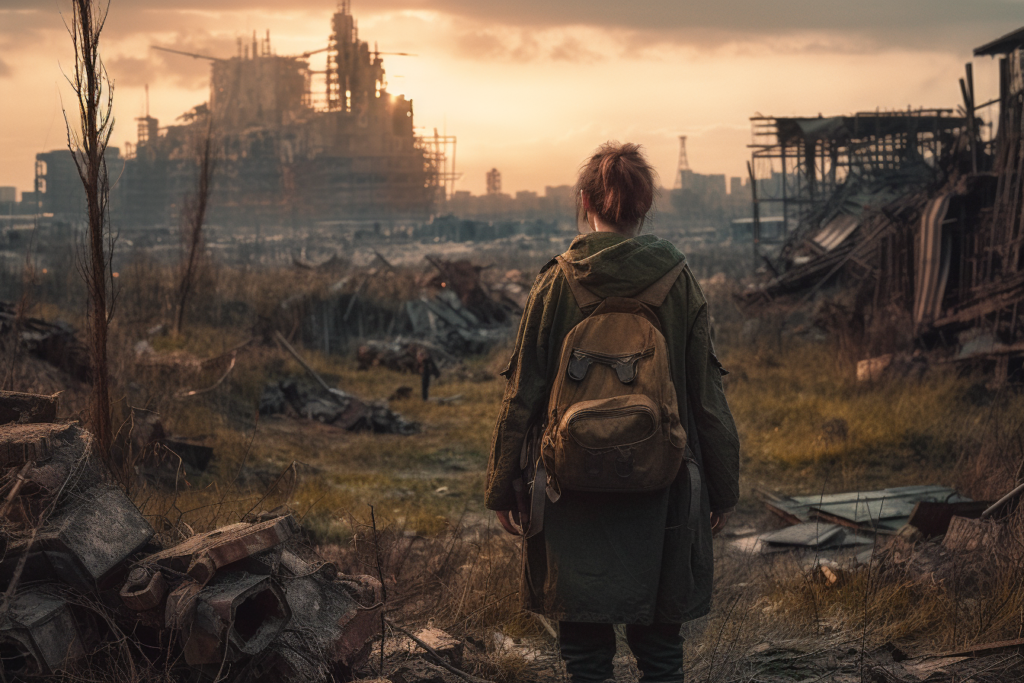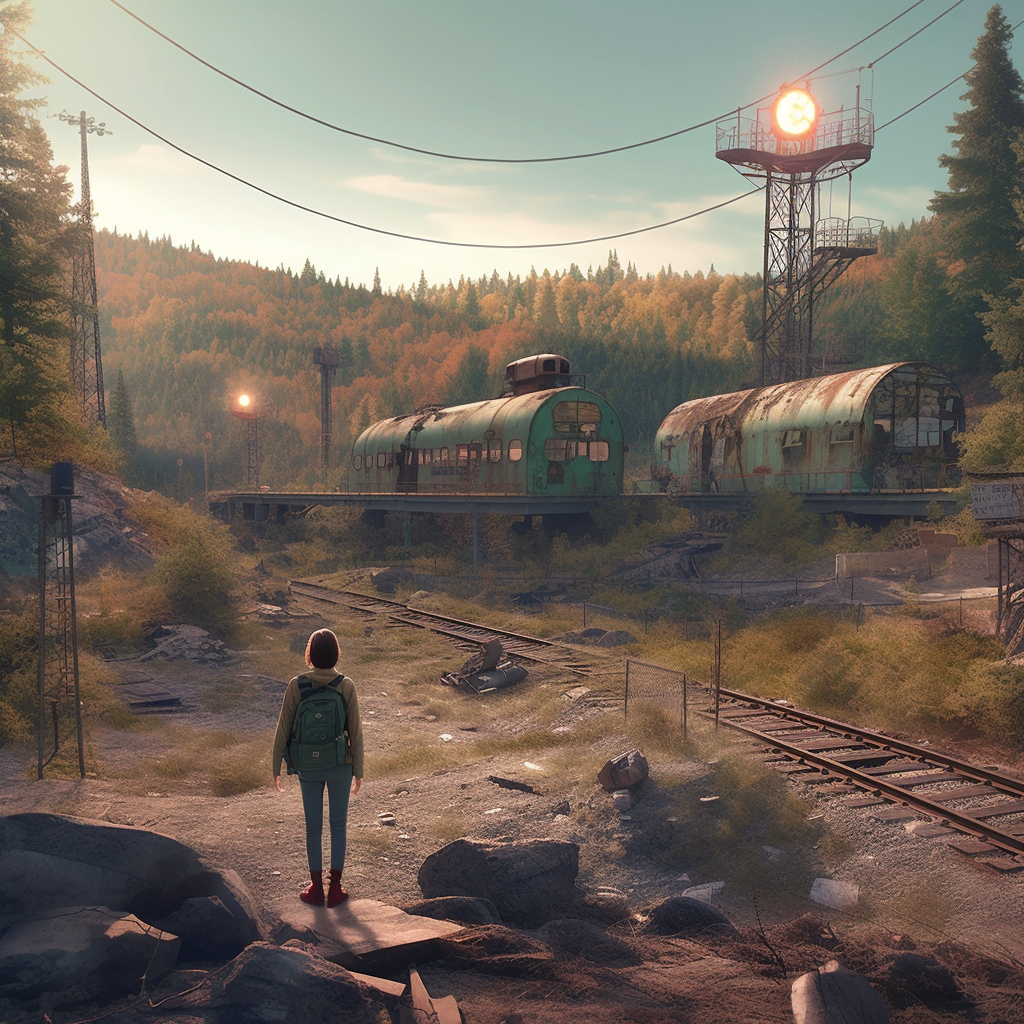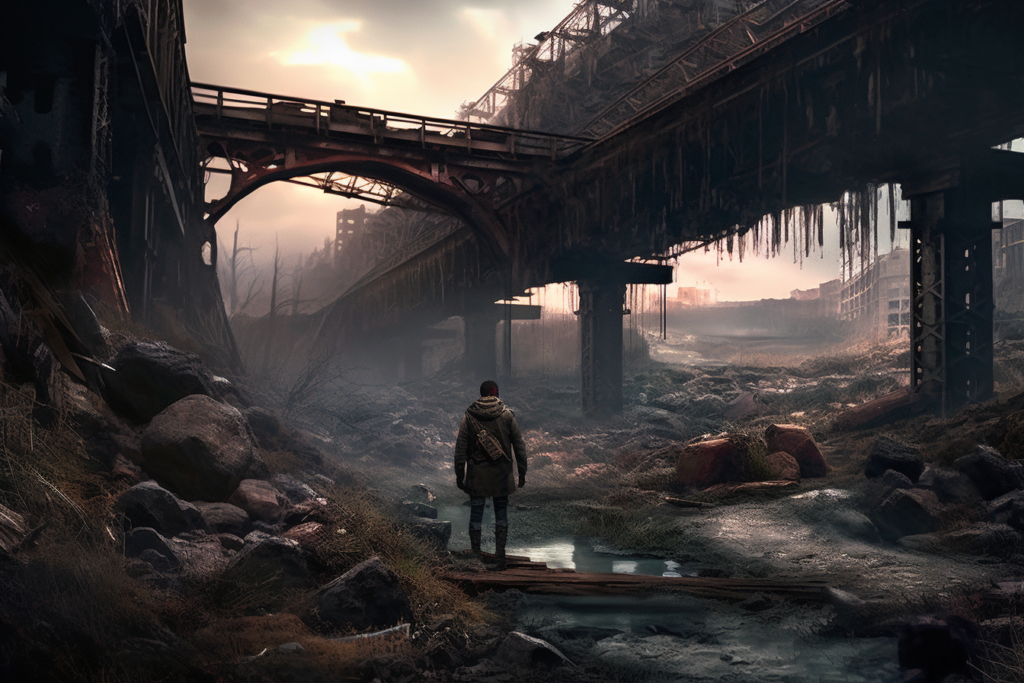
Exploring the Human Psyche in Post-Apocalyptic Literature:
In a world where the familiar crumbles into the dystopian, post-apocalyptic literature offers a unique window into the human psyche. This blog delves into the intricate tapestry of psychological themes woven into the fabric of post-apocalyptic narratives, exploring how extreme conditions shape human behavior, resilience, and transformation.
Selection of Post-Apocalyptic Novels:
- “The Road” by Cormac McCarthy: A harrowing tale of a father and son’s survival journey.
- “Station Eleven” by Emily St. John Mandel: Explores life before and after a pandemic, focusing on interconnected characters.
- “The Handmaid’s Tale” by Margaret Atwood: A chilling depiction of a totalitarian society and its impact on individual freedom and identity.
In-Depth Analysis of Psychological Themes in Post-Apocalyptic Fiction
In our journey through the desolate yet captivating realms of post-apocalyptic fiction, we uncover a rich tapestry of psychological themes that resonate deeply with our own experiences and understanding of the human condition. This section delves into the intricate psychological landscapes painted by authors in this genre, exploring how they navigate themes of trauma, resilience, and the human behavior under extreme stress. We examine how societal collapse and dystopian environments serve as backdrops for profound psychological explorations, revealing insights into the depths of human despair, the resilience in the face of unimaginable challenges, and the transformative power of hope in darkness. Each novel selected for this analysis serves as a unique lens, magnifying the intricate ways in which extreme circumstances can shape and mold the human psyche. This in-depth analysis aims not only to enlighten but also to engage our diverse readership, from avid fans of the genre to those intrigued by the psychological underpinnings of human behavior in extreme scenarios.
“The Road” by Cormac McCarthy – The Psychology of Survival and Moral Ambiguity:

- Survival Instincts: This novel delves into the primal aspects of survival, exploring how extreme conditions strip away societal norms and expose the raw human instinct to survive. The father’s protective instincts and the son’s innate goodness offer contrasting views on moral ambiguity in a lawless world.
- Hope Amidst Despair: Despite the bleakness, McCarthy infuses a subtle undercurrent of hope. The psychological resilience displayed by the characters, especially in their interactions, speaks to the indomitable human spirit.
“Station Eleven” by Emily St. John Mandel – The Interplay of Memory and Present Reality:

- Nostalgia and Loss: The novel examines how memories of the past become more poignant post-catastrophe. Characters grapple with the loss of the world they once knew, leading to a collective psychological journey of grief and acceptance.
- Reconstruction of Identity: In the absence of societal structures, characters find themselves redefining their identities. This exploration highlights the fluid nature of self-concept in response to drastic changes in the environment.
“The Handmaid’s Tale” by Margaret Atwood – Psychological Manipulation and Resistance:

- Psychological Control and Rebellion: Atwood’s dystopia is a study in psychological control mechanisms, such as fear and indoctrination. Offred’s journey symbolizes the psychological struggle between submission and the innate human desire for autonomy and self-expression.
- Empowerment in Oppression: The narrative also explores how individuals find strength and empowerment in oppressive conditions, often in subtle acts of defiance. This reflects the complexity of human psychology when faced with extreme authoritarianism.
| Novel | Theme | Key Psychological Aspects |
| The Road | Survival and Moral Ambiguity | Survival instincts vs. moral choices – Hope and resilience in despair |
| Station Eleven | Memory and Present Reality | Nostalgia and the poignant sense of loss – Redefining identities in a changed world |
| The Handmaid’s Tale | Psychological Manipulation and Resistance | Struggle between psychological control and desire for autonomy – Empowerment through subtle acts of defiance |
“The Road” by Cormac McCarthy – The Evolution of Trust and Hope:
- Father’s Protective Instincts: The father’s character is a study in the protective instincts heightened by the post-apocalyptic world. His development is marked by a gradual shift from pure survivalism to a more nuanced understanding of hope and trust, as seen through his interactions with his son.
- Son’s Innocence and Morality: The son, born into a world of desolation, represents innocence and a moral compass. His development challenges the father’s hardened perspectives, highlighting the psychological complexity of nurturing hope in a hopeless environment.
“Station Eleven” by Emily St. John Mandel – Rediscovery of Self and Community:
- Kirsten Raymonde – The Actress: Kirsten’s journey from a child actress to a traveling performer post-collapse showcases her psychological evolution. Her character development revolves around the rediscovery of self and the importance of art and community in redefining identity.
- Arthur Leander – The Actor: Arthur’s life, explored through flashbacks, offers insights into the pre-apocalyptic world. His character development, though retrospective, influences the present narrative, showing how past experiences shape current realities.
“The Handmaid’s Tale” by Margaret Atwood – Resilience in the Face of Oppression:
- Offred’s Inner Rebellion: Offred’s character is a profound study in resilience and psychological endurance. Her development is marked by an internal rebellion against the oppressive regime, showcasing the strength required to maintain one’s identity and sanity in a repressive society.
- Moira’s Defiance: Moira, as a foil to Offred, displays outright defiance against the regime. Her character development highlights the psychological impact of rebellion and the different forms resistance can take in oppressive conditions.
| Novel | Character | Character Development Themes |
| The Road | Father | Evolution from survivalism to understanding hope and trust. |
| Son | Innocence and moral compass challenging despair with hope. | |
| Station Eleven | Kirsten Raymonde | Rediscovery of self and the importance of art and community in identity formation. |
| Arthur Leander | Influence of past experiences on present realities, explored through flashbacks. | |
| The Handmaid’s Tale | Offred | Internal rebellion against oppressive regime, maintaining identity and sanity. |
| Moira | Outright defiance against the regime, showcasing different forms of resistance in oppressive conditions. |
Engaging Readers in the Psychological Depths of Post-Apocalyptic Stories

Reflecting on these character arcs, consider how they mirror real-world psychological phenomena. How do these characters’ experiences and transformations resonate with your understanding of human behavior in extreme conditions? Share your insights and engage in a discussion about the profound psychological layers of character development in these compelling post-apocalyptic narratives.
Narrative Techniques Examination:
- McCarthy’s sparse style in “The Road” mirrors the bleakness of the setting, emphasizing the psychological weight of the narrative.
- Mandel’s non-linear storytelling in “Station Eleven” reflects the fragmented nature of memory and identity.
- Atwood’s use of first-person narrative in “The Handmaid’s Tale” offers an intimate glimpse into the protagonist’s psychological turmoil.
Discussion of Reader Impact: These novels resonate with readers by offering insights into the human condition. They provoke questions about our own psychological responses to extreme situations and the resilience of the human spirit.

As we journey through the desolate yet profound landscapes of post-apocalyptic literature, we uncover a rich tapestry of psychological complexities. These narratives offer more than mere tales of survival; they are reflective mirrors showcasing our deepest fears, hopes, and the resilience of the human spirit. In exploring these fictional dystopias, we gain invaluable insights into our own psychological landscapes, understanding better the intricacies of human nature under extreme conditions.
For those intrigued by the psychological impact of literature and seeking a deeper scholarly perspective, the article “Changed by Literature? A Critical Review of Psychological Research on the Impact of Reading” on JSTOR offers a comprehensive review. It can be accessed here.
Additionally, the intersection of literature and psychoanalysis is a fascinating area to explore. The article “The Relationship Between Literature and Psychoanalysis” on Taylor & Francis Online delves into this subject, providing insights from psychoanalytic literary criticism. Discover more here.
These resources will further enrich your understanding of the profound psychological layers present in post-apocalyptic literature, inviting you to delve deeper into the exploration of the human psyche in extreme scenarios.
